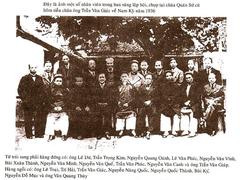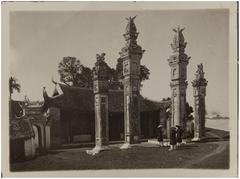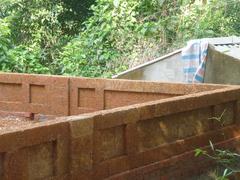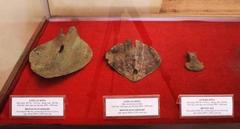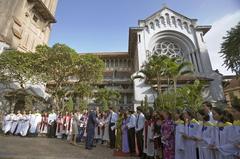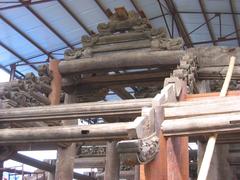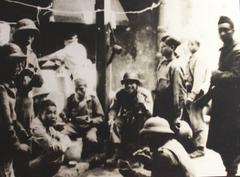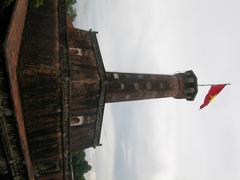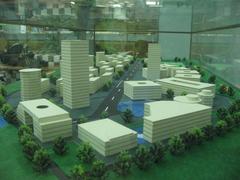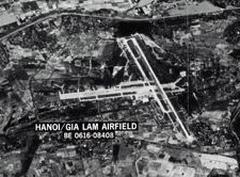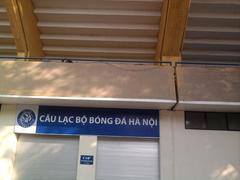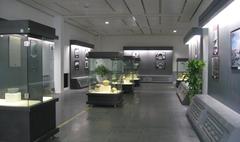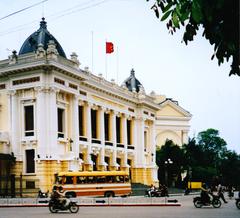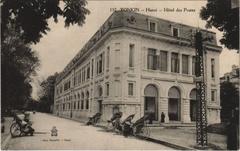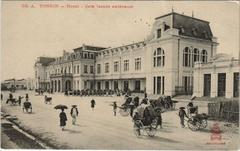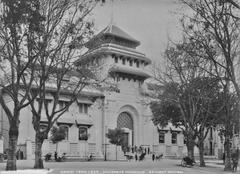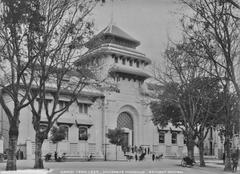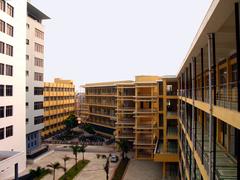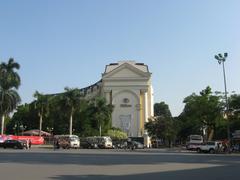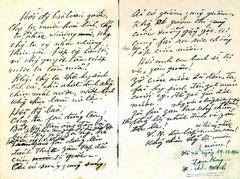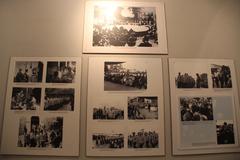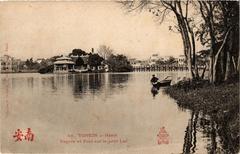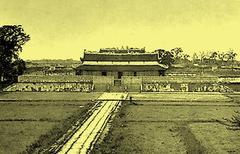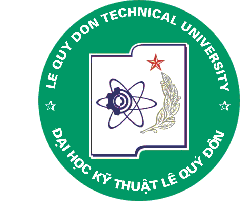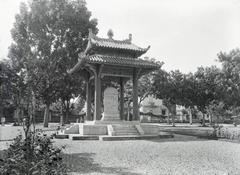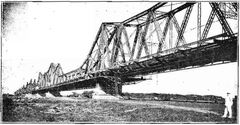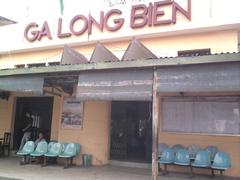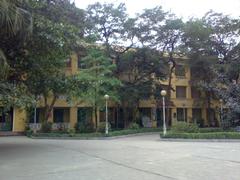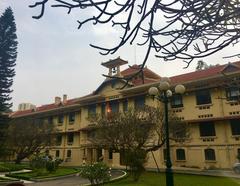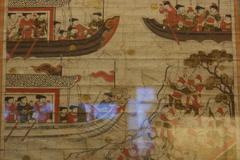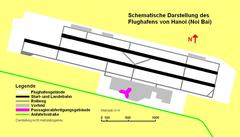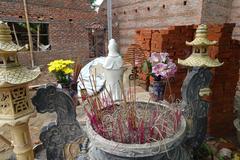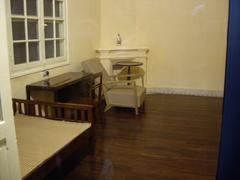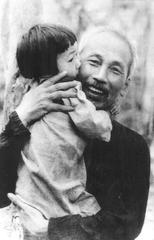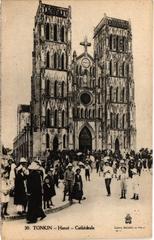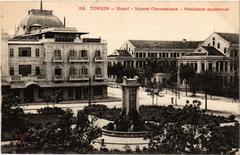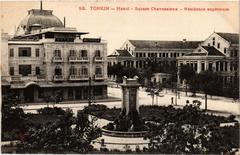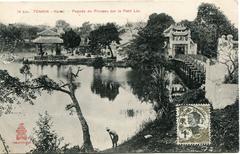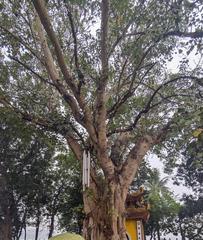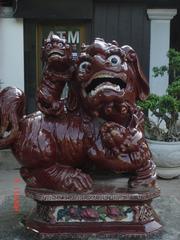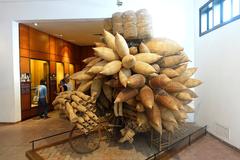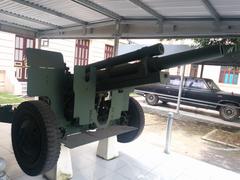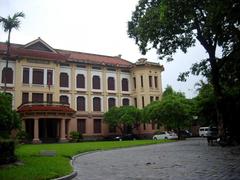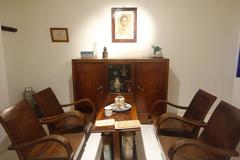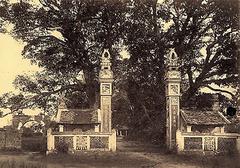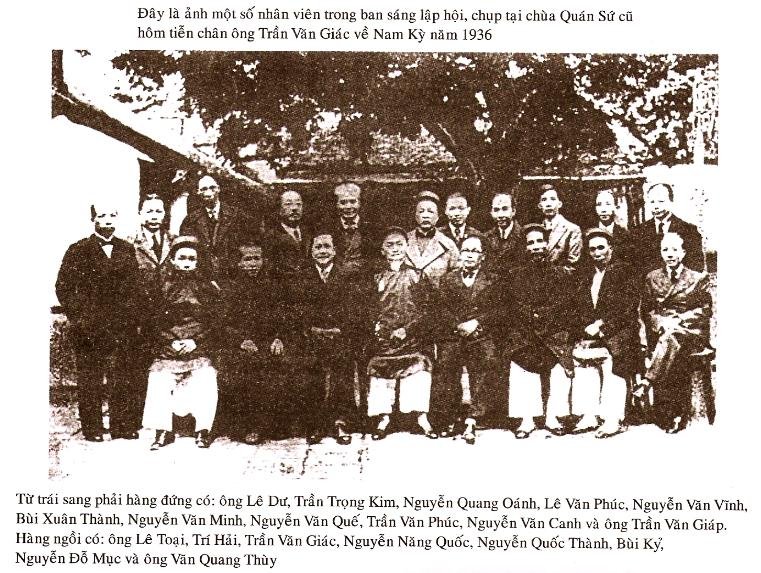
Quán Sứ Temple Hanoi: Complete Visiting Hours, Tickets & Travel Guide
Date: 14/06/2025
Introduction: A Pillar of Hanoi’s Buddhist and Cultural Heritage
Quán Sứ Temple (Chùa Quán Sứ), located at 73 Quán Sứ Street in Hanoi’s Hoàn Kiếm District, stands as one of Vietnam’s most revered Buddhist sites and a vital center of spiritual, cultural, and communal life. Established in the 15th century under the Lê Dynasty, the temple began its journey as a guesthouse for Buddhist envoys—a unique role that shaped its distinctive identity as both a place of worship and a hub for international religious diplomacy. Today, Quán Sứ Temple is the headquarters of the Vietnam Buddhist Sangha, the country’s largest Buddhist organization, and serves as a living testament to the evolution of Vietnamese Buddhism, architecture, and community engagement (Vietnam Online, Wikipedia, Mytour.vn).
This comprehensive guide will walk you through Quán Sứ Temple’s rich history, architectural highlights, visiting hours, ticket information, etiquette, travel tips, and nearby attractions—equipping you for a meaningful and respectful experience at this iconic Hanoi historical site.
Contents
- Historical Overview
- Architectural Highlights
- Role in Vietnamese Buddhism
- Cultural and Community Significance
- Visiting Information
- Hours & Tickets
- Accessibility & Directions
- Rituals & Etiquette
- Facilities & Services
- Special Events
- Nearby Attractions
- Visitor Tips
- FAQ
- Conclusion
- Sources
Historical Overview
Origins and Early History
Quán Sứ Temple’s origins date to the Lê Dynasty in the 15th century, when Vietnam was emerging as an independent Buddhist kingdom. Its initial function was a guesthouse (quán sứ) for Buddhist envoys from neighboring countries, such as Laos and Cambodia, who visited the imperial city of Thăng Long (present-day Hanoi). This unique role is encapsulated in its name, meaning “Ambassadors’ Pagoda.” The site offered both lodging and a shrine for spiritual practice, symbolizing Vietnam’s religious openness and diplomatic tradition (Vietnam Online).
Over subsequent centuries, as Buddhism gained prominence in Vietnamese society, Quán Sứ evolved from a diplomatic guesthouse into a full-fledged Buddhist temple, expanding its religious, cultural, and social functions.
Architectural Evolution and Restorations
The temple’s architecture was initially modest, but successive dynasties expanded and embellished the complex. The 19th-century Nguyễn Dynasty oversaw significant renovations, adding new halls, shrines, and monastic quarters. In the 20th century, Quán Sứ Temple became the headquarters of the Unified Buddhist Church of Vietnam, prompting further expansion and modernization while preserving traditional Vietnamese Buddhist aesthetics (Mytour.vn, Vietnam Guide).
One of the temple’s distinguishing features is its use of the Vietnamese alphabet (quốc ngữ) in inscriptions—a rare choice among ancient pagodas that typically favor Chinese characters, reflecting the temple’s modern identity and national significance.
Architectural Highlights
Layout and Main Features
Quán Sứ Temple is organized around a traditional Vietnamese Buddhist layout with a central axis leading from the imposing triple gate (Tam Quan) through a spacious courtyard to the main hall (Đại Hùng Bảo Điện). The triple gate, topped by a bell tower, symbolizes the Three Jewels of Buddhism: the Buddha, the Dharma, and the Sangha (Mytour.vn).
The main hall features robust wooden columns, intricately carved beams, and ornate altars. Statues of Shakyamuni Buddha, Amitabha, Avalokiteshvara (Quan Âm), and other bodhisattvas are arranged hierarchically. The lotus motif—representing purity and enlightenment—adorns roofs, eaves, and ceremonial artifacts. Auxiliary structures include a library, lecture halls, monks’ quarters, and offices for the Vietnam Buddhist Sangha (vinwonders.com).
Artistic Features and Symbolism
Decorative elements such as dragons, phoenixes, and gold-leafed woodwork reflect Vietnamese artistic traditions and Buddhist symbolism. The presence of lotus ponds and tranquil gardens further enhances the temple’s contemplative ambiance. The bell tower, a central element above the main gate, is rung during major ceremonies and festival days.
Preservation and Modernization
Renovations in the 20th and 21st centuries have introduced structural reinforcements and modern amenities while carefully preserving the temple’s historic character (Mytour.vn, Nomads Travel Guide). The temple’s use of traditional materials—timber, terracotta tiles, and brick—ensures harmony with its urban surroundings and a cool, peaceful interior.
Role in Vietnamese Buddhism
As the headquarters of the Vietnam Buddhist Sangha, Quán Sứ Temple is the administrative and spiritual heart of Vietnamese Buddhism. It plays a central role in organizing national and international Buddhist events, hosting ordinations, and leading major festivals such as Vesak (Buddha’s Birthday), Vu Lan (Ghost Festival), and the Lunar New Year (Tết) (Vietnam Online, Ftrip Vietnam).
The temple’s daily rituals include chanting, meditation, and offerings, with heightened activity on the 1st and 15th days of the lunar month. Its library and educational facilities support Buddhist scholarship, community outreach, and interfaith dialogue.
Cultural and Community Significance
Quán Sứ Temple is deeply embedded in Hanoi’s social fabric. It is a hub for community engagement, offering charitable services such as free health clinics, food distribution, disaster relief, and educational programs. The temple hosts public lectures, meditation sessions, and Dharma talks, fostering both personal and communal spiritual growth (Teach at Language Link, vinwonders.com).
The temple’s open-door policy and central location make it a pillar of urban identity, blending tradition with modern city life. Its use of the Vietnamese script instead of Chinese characters for inscriptions is a powerful expression of national identity (vinwonders.com).
Visiting Information
Hours & Tickets
- Opening Hours: Daily, 6:00 AM – 7:00 PM (may be extended on festival days)
- Admission: Free; donations are welcome for temple maintenance and charitable activities (hanoioldquarterguide.com)
Accessibility & Directions
- Address: 73 Quán Sứ Street, Hoàn Kiếm District, Hanoi (vietnamimmigration.com)
- Getting There: The temple is easily accessible by taxi, motorbike, or public bus (routes 01, 32, 40, 49, 86). It is within walking distance from the Old Quarter and Hoàn Kiếm Lake.
- Accessibility: The temple grounds are generally accessible to those with mobility challenges, though some areas have steps or uneven surfaces. Staff and worshippers are typically willing to assist.
Rituals & Etiquette
- Dress Code: Modest attire is required; cover shoulders and knees, remove hats and sunglasses in the main halls.
- Shoes: Remove footwear before entering interior sanctuaries.
- Behavior: Speak softly, refrain from disruptive actions, and avoid flash photography near altars and during prayers.
- Participation: Visitors are welcome to observe or respectfully join in rituals such as incense offering and prayer. If unsure, observe others or ask staff for guidance (north-vietnam.com).
- Donations: Voluntary, and appreciated as a gesture of respect.
Facilities & Services
- Temple Complex: Main and auxiliary halls, library, lecture rooms, monks’ quarters, and administrative offices.
- Community Services: Charity drives, educational programs, meditation sessions, and support for disadvantaged groups are regularly organized.
- Public Lectures & Dharma Talks: Available especially during festival periods or weekends, often in Vietnamese, but non-Vietnamese speakers are welcomed to observe (vinwonders.com).
Special Events
Major Buddhist festivals such as Vesak, Vu Lan, and Tết are celebrated with ceremonies, chanting, processions, and community gatherings. The temple is especially vibrant during these times, providing an immersive cultural experience.
Nearby Attractions
Enhance your cultural itinerary by visiting these landmarks within walking distance:
- Hoàn Kiếm Lake & Ngoc Son Temple
- Hanoi Old Quarter
- Temple of Literature
- St. Joseph’s Cathedral
- Thang Long Imperial Citadel
- Vietnam Museum of Ethnology
Visitor Tips
- Best Time to Visit: Early morning or late afternoon for a tranquil experience. For vibrant cultural immersion, visit during major Buddhist festivals.
- Photography: Allowed in outer courtyards; avoid using flash and always seek permission before photographing people or ceremonies (north-vietnam.com).
- Language: Most signage is in Vietnamese, but temple staff can assist in basic English. Guided tours are available through local agencies.
- Combine Visits: Take advantage of the temple’s central location to explore nearby historical and cultural sites.
Frequently Asked Questions (FAQ)
Q1: What are Quán Sứ Temple’s visiting hours?
A1: The temple is open daily from 6:00 AM to 7:00 PM, with extended hours during festivals.
Q2: Is there an entrance fee or are tickets required?
A2: Admission is free; no tickets are required.
Q3: Is Quán Sứ Temple accessible for visitors with mobility challenges?
A3: The grounds are generally accessible; staff are available to assist as needed.
Q4: When is the best time to visit?
A4: For a peaceful visit, come early in the morning or late afternoon; for festival experiences, visit during major Buddhist holidays.
Q5: What are the nearby attractions?
A5: Hoàn Kiếm Lake, the Temple of Literature, St. Joseph’s Cathedral, Hanoi Old Quarter, and more.
Conclusion
Quán Sứ Temple is a living symbol of Hanoi’s spiritual, historical, and cultural richness. From its origins as a diplomatic guesthouse to its role as the administrative center of Vietnamese Buddhism, the temple welcomes pilgrims, scholars, and travelers alike to experience its serene atmosphere, exquisite architecture, and vibrant community life. Whether you’re seeking spiritual renewal, cultural insight, or a tranquil retreat from the city, Quán Sứ Temple is an essential stop on any Hanoi itinerary.
For more travel tips, detailed guides, and cultural insights on Hanoi’s historical sites, download the Audiala app and explore our related articles. Follow us on social media for the latest updates on temple events and exclusive travel content.
Image credits: Photos of Quán Sứ Temple’s architecture and ceremonies are available at vinwonders.com and other linked sources.
Interactive Map: Find Quán Sứ Temple’s location and nearby attractions with Google Maps.
Sources
- Vietnam Online – Quán Sứ Pagoda
- Wikipedia – Quán Sứ Pagoda
- Mytour.vn – Quán Sứ Pagoda: The Most Revered Ancient Site in Hanoi
- Vietnam Guide – Quán Sứ Pagoda Hanoi
- Vinwonders.com – Quán Sứ Pagoda Hanoi
- Nomads Travel Guide – Quán Sứ Pagoda
- Teach at Language Link – Buddhism in Vietnam
- Ftrip Vietnam – A Brief History of Buddhism in Vietnam
- Hanoi Old Quarter Guide – Quán Sứ Pagoda
- Vietnam Immigration – Quán Sứ Pagoda Hanoi City Vietnam
- North Vietnam – Quán Sứ Pagoda Hanoi
